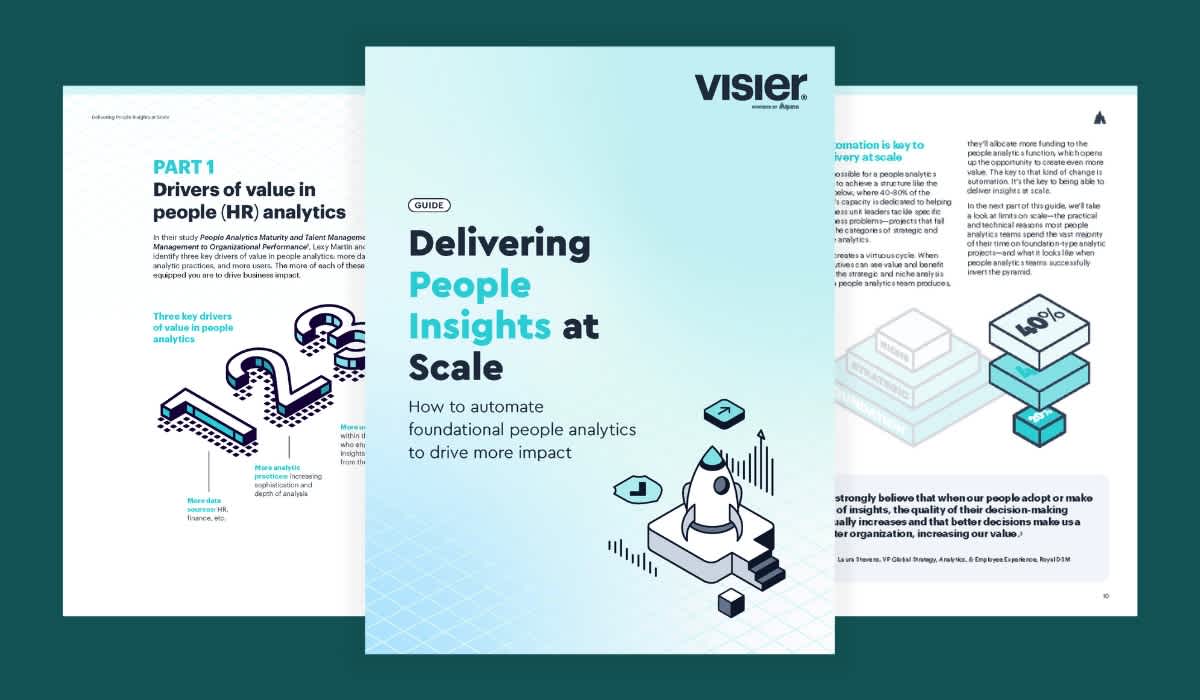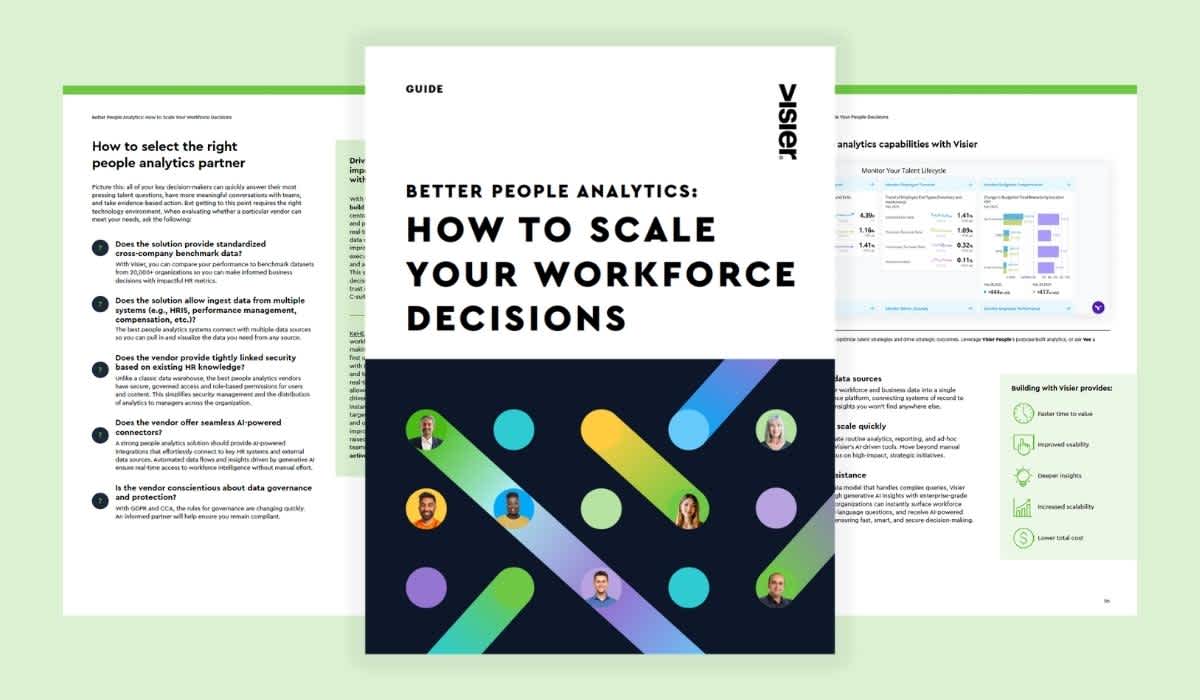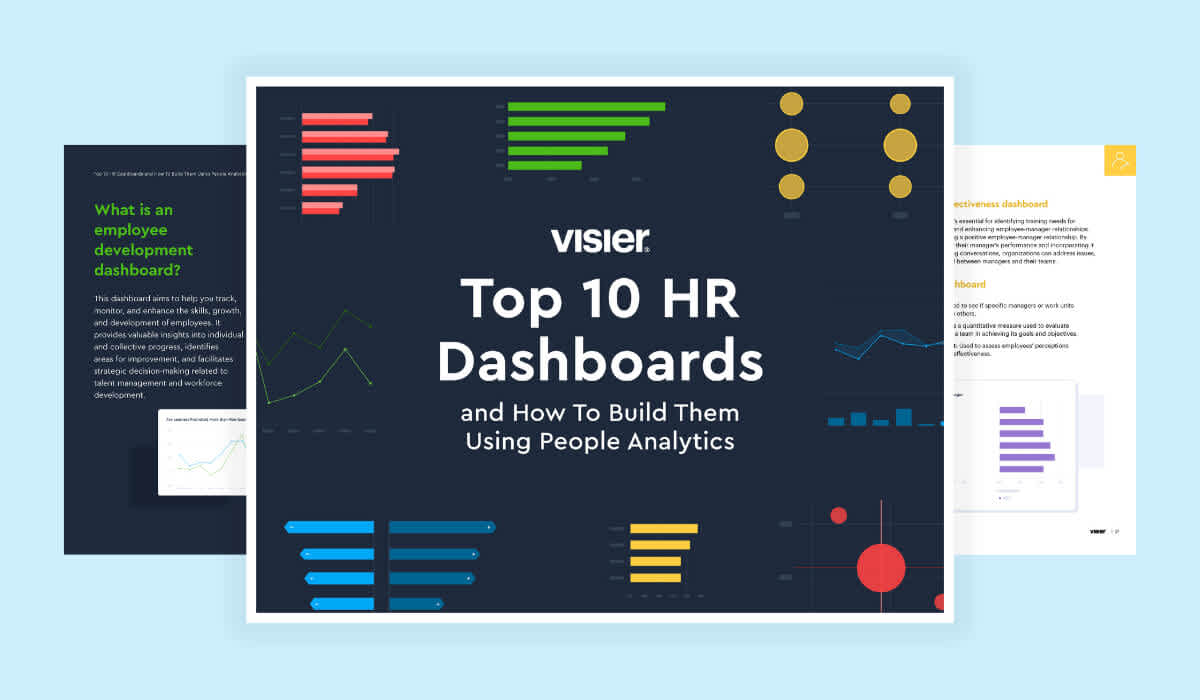Why Scaling People Analytics is a Lot Like Chin-ups
Scaling people analytics is a lot like chin-ups. Creating one HR dashboard might be easy, but maintaining 100 is a different story.

Creating an insightful dashboard about your workforce is like a chin-up: Doing one is easy, doing 100 is hard.
A single eye-catching dashboard for a couple executives is not going to overwhelm a skilled data team. But executives inevitably want changes that can turn one dashboarding project into a never ending saga for the person who built it.
On top of that, delivering people analytics to managers across the organization–not just to the executive ranks–is becoming a priority for employers. At this level of scale, the dashboarding muscles quickly give out.
Why people managers need insights about their teams
Until 2019, the majority of organizations that had people analytics functions were focused on delivering insights to a handful of executives. These leaders were asking a range of basic business questions about HR activity, such as: Where are my employees by department? Why are people leaving the organization?
This used to be sufficient when a top-down employer-employee social contract was the norm. But times have changed.
With hybrid work, high rates of burnout, and demands for social justice, the world of work has become infinitely more complex. At people-centered organizations, employers still get a bird’s eye view of HR trends, but they are also having to engage in an ongoing dialogue with employees. Data-supported managers are at the heart of these interactions.
For example, if a number of employees are reporting a spike in stress in pulse surveys, managers can see this data and compare it to other teams at an aggregate level. The manager can then determine if the stress spike is due to a problem within their group and take action if necessary.
Like many aspects of business today, managers need to lead their teams from a place of understanding, not gut feel, and that means they need data-informed insights.

People analytics makes agile people leaders
Managers also have a critical role to play in helping organizations hire smarter when the time to fill for open positions is at an all time high. Given the pace at which hiring managers need to move, waiting for a monthly update from the talent acquisition team just won’t cut it. A manager with current and accurate data at their fingertips can manage their talent pipeline and recruiting resources in a fact-based way.
Research from Insight222 suggests that companies are not just doing people analytics but are looking to scale their capabilities more broadly. According to the report, 60% of companies grew their people analytics team between June 2020 and June 2021. 75% of people analytics leaders predicted they would receive even more investment for their teams leading up to June 2022.
If more organizations are investing in people analytics, they are also expecting to generate value from that investment. Visier research shows that organizations thrive financially when the ability to retrieve insight goes beyond the data science and reporting teams.
However, assuming that your solution that currently services 20 people analytics users will be able to scale to a thousand users could set you up for failure.
Scaling people analytics is like doing 100 chin-ups
According to Visier benchmark data, a typical large company will have 11 managers per 100 employees–in a 5,000-person business, that’s nearly 500 people who need to be served with insights. Some organizations can do this with ease. For example, multinational science and technology company used Visier to grow its user base to a network of 3,500 users, which includes the entire management population of business and people leaders, plus the HR function. Line managers make up 3,000 of these users.
Other organizations struggle when they try to support so many users. Providing dashboards using traditional BI tools and ensuring they are secure can get in the way of reaching this level of scale, and it can feel a lot like doing 100 chin-ups when you don’t have the right muscles for it. Here are three reasons why:
1. Overwhelming security requirements
People data is sensitive. A manager should only see details for direct reports, not everybody in the organization. They also need to see how they compare to other parts of the business without accessing details for individuals. When leaders from different levels of the organizational hierarchy want access to the same insight, they may want to customize the content. But supporting each leader’s personal needs and securing the data quickly becomes overwhelming.
Providing this level of service across the organization using manual approaches is simply unsustainable. The data analyst quickly becomes consumed curating data and building dashboards to address a multitude of problems for disparate audiences. Staying on top of all these different needs means the data team will create a lot of complexity that requires more people to manage.
2. Limited flexibility
Exploratory analysis for people managers is about freely investigating patterns and trends as they relate to things like wellbeing, productivity, and pay equity.
This kind of free exploration just isn’t possible with a traditional BI approach. Using this method, the number of topics and data sources are limited because the logic needs to be built into the dashboard in advance. Managers can’t ask new questions on the fly without submitting a change request to their analyst team or teams. This approach creates a backlog, as giving each leader their own “data concierge” doesn’t scale and results in compromises and static content. At the end of the day, dashboards built with traditional BI tools can be visually stunning–but what you see is what you get.
3. Too many manual tasks
As analytics expert Brent Dykes aptly describes in this Forbes article, there are many milestones that organizations must hit before they can take action on the data and get value from their analytics investment.
This is particularly true with people data: Given its complexity and volume, building a dashboard typically involves connecting a visualization tool to some kind of data store, like a data warehouse or a data lake. But ever-changing hierarchies, security requirements, and external sources like benchmark data are not easily supported by this approach.
When so much work is tied up in data preparation and extraction, organizations are less focused on determining how best to analyze the data and take action. This is a problem, argues Dykes, because the decision-making phase is really where analytics teams generate value. Too much time spent on manual tasks means the analytics investment will never pay for itself.

Deliver people insights to a thousand managers with ease
So how can data teams deliver compelling, flexible people insights to a thousand managers? By leveraging the power of automation with Visier.
Visier automates the data preparation stage, standardizes all metrics, filters and hierarchies, and centralizes security so that an unlimited number of analytics outputs can be created and shared. All changes are made once, centrally, so that all of the live data visuals inherit these updates. Visier does this by breaking the paradigm of how analytics is delivered using our proprietary in-memory analytics engine, which simply performs tasks quickly in a way that traditional BI tools cannot.
This means many managers can view the same data asset, but in different degrees of detail so that individuals only see what they need to see. In a hyper-competitive environment for talent where the social contract between employer and employee has shifted, this kind of scale is critical.
Delivering people analytics at this scale using traditional tools is hard. By changing the foundational approach of how analytics is delivered, Visier is making this possible for thousands of clients. Our customers are doing 100 chin-ups daily–without ever breaking a sweat.



